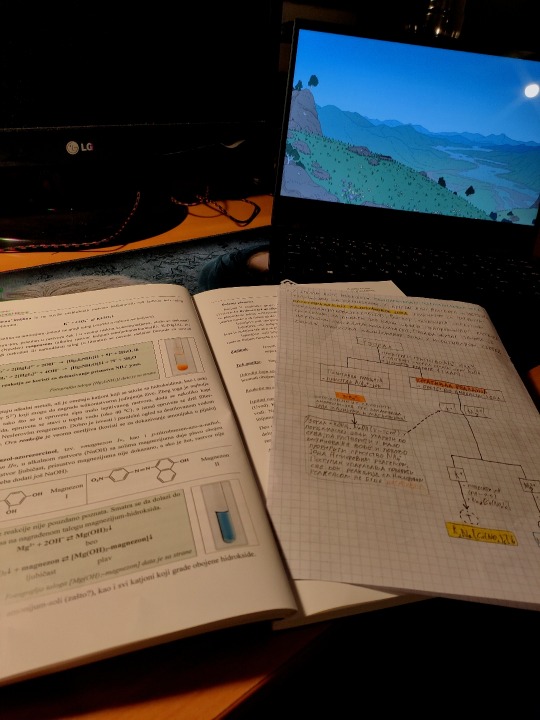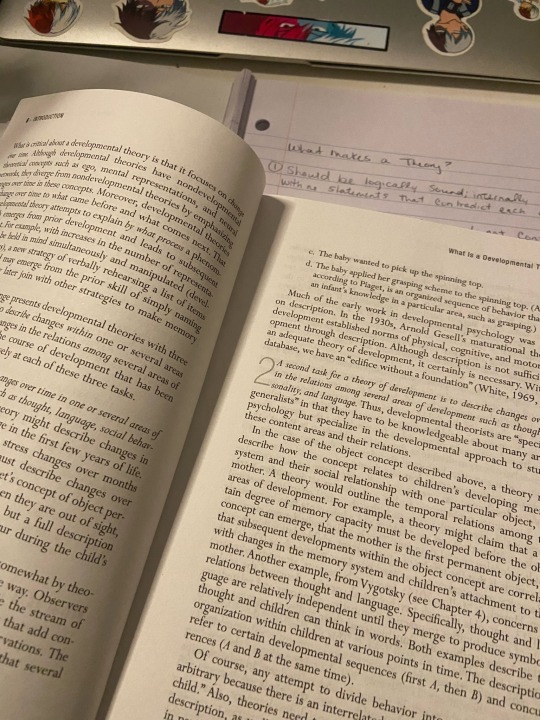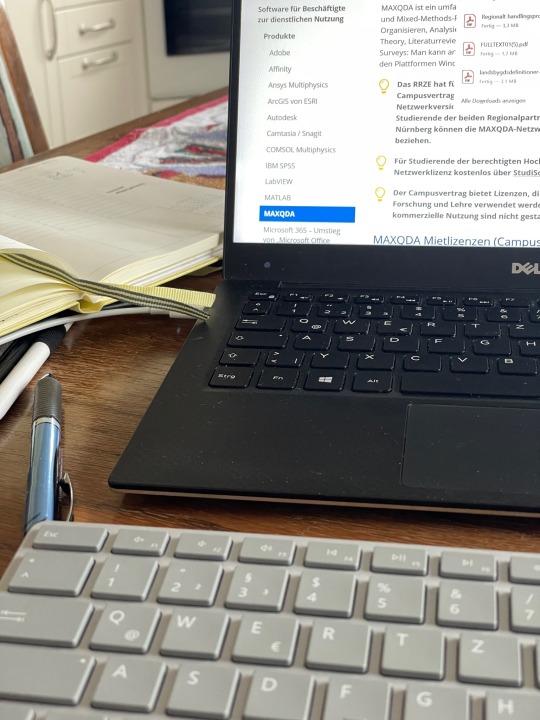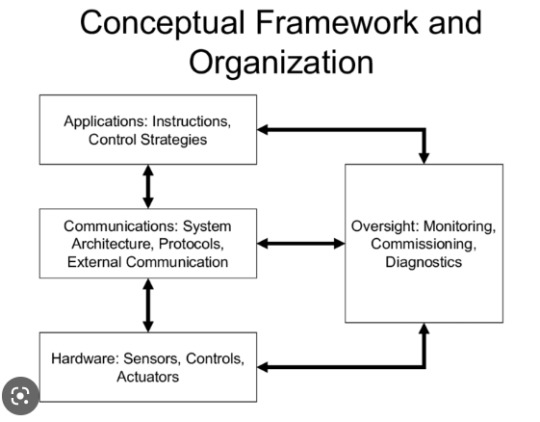#Qualitative research
Text
Linguistics education and its application in the workplace: An analysis of interviews with linguistics graduates (new publication in Language)
The Superlinguo Linguistics Job Interviews were a chance for me to ask people with a range of linguistics training and a range of different jobs about the links they saw between their education and their work. Asking the same questions each month, I noticed a real diversity in the thoughtful responses from people, but also some common threads.
I teamed up with qualitative researcher Dr Anuja Cabraal to look at what we could learn from the first 50 interviews. We looked at the kind of skills and knowledge people reported using in their jobs, and the advice they had for current students and job seekers. We also connected this to the larger literature on employment for linguistics students, and for humanities/liberal arts students in general. This article will hopefully help those who teach linguistics to make connections to how it is useful in a wide range of careers.
Having been so involved in running these interviews for years, it was great to work with someone who brought a fresh perspective to them. I’m also incredibly grateful to everyone who participated in the series over the years and shared their experience and insights.
I’ve also updated the lingjobs resources slides to include a summary of content from the article, and more resources.
Abstract
This paper provides an overview of post-study employability for students of linguistics. We begin with a review of the literature on employability, education, and skills. We then conduct an analysis of 51 interviews with people who studied linguistics and went on to work in a diverse range of occupations. We provide a summary of the interview participants and then conduct an analysis of the domain-specific and transferable skills reported and advice offered in these interviews. Finally, we look at how linguistics programs can use the existing literature and insights from these interviews to help their students think about careers.
Reference
Gawne, Lauren & Anuja Cabraal. 2023. Linguistics education and its application in the workplace: An analysis of interviews with linguistics graduates. Language, 99(1): e35-e57 doi: 10.1353/lan.2023.0003 [published version - OA after March 2024]
See also
Superlinguo Linguist Job Interviews full list
Linguistic Job Resources slide set (bit.ly/ling-jobs)
Doing your own Linguistics Job Interviews
#linguistics#jobs#careers#publication#new article#research#qualitative research#humanities#social science#liberal arts
47 notes
·
View notes
Text
“You’re free from just a girl or a boy”: Nonbinary children’s understanding of their gender
In recent years, research on gender diversity in early childhood has increased significantly. However, much of the published literature still focuses on children whose experiences align with binary gender norms, inadvertently excluding nonbinary experiences from analysis.
We seek to explore how nonbinary children, aged five to eight, perceive and understand their gender modality and experiences.
Salinas-Quiroz, F., Aral, T., Hillekens, J., Hölscher, S., & Demos, J. (2024). “You’re free from just a girl or a boy”: Nonbinary children’s understanding of their gender. International Journal of Transgender Health, 1–18. https://doi.org/10.1080/26895269.2024.2351470
open access!
#psychblr#that is a tag huh. uh oh#qualitative research#international journal of transgender health#gender studies#developmental psychology
2 notes
·
View notes
Text
is there any discourse on here about the QR masturbation paper yet
79 notes
·
View notes
Text


06.03.2023
My first qualitative analysis, went pretty well, I'm in love with the subject already!
#stem major#student#study aesthetic#chemistry#college#stem academia#studyblr#analyticallyminded#qualitative research#studyspiration#study hard#stem aesthetic#online chemist
23 notes
·
View notes
Text
Sociological Theory and the Canon
It's Sociology Sunday! Today we're talking theory.
What is sociological theory?
Sociological theory is a set of interrelated ideas that allow for the (1) systematization of knowledge of the social world (2) the explanation of that world, and (3) predictions about the future of that world, and which are falsifiable through empirical research.
Theory provides a possible answer to questions like, “why did this happen?” or, “why did they do that?” This means theory is speculation, not fact, but unlike “ideas” generally, theory is speculation driven by a more formal, systematic, process, which incorporates the work of previous theorists and research findings.
The Sociological Canon
Some theories are more popular than others. Some theories, while unpopular, are considered “pivotal” to the foundation of sociology. The “sociological canon” helps us identify the “popular” and “pivotal” theories.
The sociological canon is defined as the theories, ideas, and texts that are widely considered as the most important in the field of sociology (Ritzer and Stepnisky 2018)

“I’m not a regular mom theory, I’m a cool mom theory!”
The canonized theories are sort of like the “cool mom” in Mean Girls (oshowing my age here, the original 😘) – others exist, but these are the ones we tend to think of first when we think of “the mom in Mean Girls” (or, in this case, “sociological theory”).
Critics of the canon argue that the canon is not a neutral construction; rather, it is affected by power and the politics of the theory. To some degree, they are right.
The field of sociology has historically privileged theories that have testable hypotheses, known as “positivist” theories, and theories produced by white men faculty. In this, we can see that the canon, and relatedly, the field of sociology, have tended to reflect power structures in society more broadly. Which means that, yes, technically the canon is full of theories created by old white dude philosophers in Europe in the late 1800s to early 1900s. Nowadays, though, most sociologists agree that the canon includes much more than Marx, Weber, and Durkheim.
Meaning the canon is now considered to include theories from other classical theorists writing during the same time as Mark/Weber/Durkheim, like W.E.B. DuBois and Ida B. Wells. The canon has also expanded in the last 40 or so years to include contemporary theories, such as emancipatory, feminist, and queer theories. These expansions were important steps towards accounting for the reality of the field as it presently exists, and to correctly reflect the field’s foundations which expand far beyond whiteness, masculinity, and western imperial culture. Presently, women make up the (quantitative) majority of sociology faculty, and while this women majority was historically white, the number of women, including and especially women of color, in sociology continues to grow, substantially outpacing white men.
Sociological Theory and Empirical Research
Empirical research is rooted in theory.
Sometimes these theories are the driving force behind research, constituting the research question for an empirical study. You begin with the possible answer to the question, the theory, and you investigate to see if it holds up–your results may call into question some or all of the theory’s propositions. This is called “deductive reasoning.”
Theory is not always the starting point of research, though. Sometimes theory is generated from research. This process is called “inductive reasoning.” In this case, you begin with observations, draw conclusions, and from those conclusions, generate new ideas about the social world.
Deductive reasoning is often linked with quantitative research. Quantitative researchers usually have some idea of theory before forming their research question, and some quantitative research is constructed with the goal of testing (falsifying) theoretical propositions. Qualitative research, in contrast, often uses inductive reasoning, beginning with observation and developing theory as part of the study’s conclusions. This is not always the case with qualitative research, though.
One approach to creating contemporary sociological theory assumes the “best” theory is constructed via inductive reasoning, and thus, begins with observation, absent of pre-existing ideas. This is known as a “grounded theory” approach, because it produces theory that is “grounded” in observation of tangible facts instead of based upon pre-existing abstract ideas. The sociologists Barney Glaser and Anselm Strauss are often credited with popularizing the “grounded theory” approach, which they outlined in their 1967 book “The discovery of grounded theory: Strategies for Qualitative Research”.
Other approaches to qualitative research, like content analysis, may start with theory or observations.
Summary:
instagram
Watch full lecture:
#sociology#science#social science#higher education#professor#research#empirical research#sociology sunday#sociological theory#theory#deductive reasoning#inductive reasoning#qualitative research#quantitative research#grounded theory#marx#durkheim#weber#dubois#classical#contemporary#teaching#lesson#studyblr#college#university#Instagram
4 notes
·
View notes
Text

Class starts next week and I am getting ready to Ace it!
#doctoral student#educational psychology#blackphdstudent#studyblr#academic research#black college girl#student#educational research#qualitative research#research design#developmental psychology
14 notes
·
View notes
Text


dusty keyboards, sunny landscapes, mind and desk - a mess 💫
#mine#mess#maxqda#qualitative research#Idk what’s going on#geography#study#desk setup#desk#messy desk#bachelor thesis
17 notes
·
View notes
Text
Answering Tumblr polls makes me feel like I'm taking part in important sociological research.
3 notes
·
View notes
Text
just conducted a successful aging assessment on an old person for my psychology practical. god, do people have experiences.
#mental health#psychology student#mental health awareness#mental health support#mental health reminders#coping#reminders#therapy#positivity#kindness#wellness#academia#psychology major#qualitative research#quantitative research#research
5 notes
·
View notes
Text
Precision Insights: Expert Quantitative Market Research Services
Our Quantitative Market Research Services help you quickly gather insights from our panellists and understand the changing consumer behaviour. Using our comprehensive services, we find the answers to the most of your questions! Follow this link to know more https://insighttellers.com/services/quantitative-research-market

#Quantitative Market Research Services#Qualitative Research#Translation#Survey Programming#Data Collection & Analysis#Secondary Research#Panel Aggregation#Contracted Work
2 notes
·
View notes
Text

How to make theoretical framework for qualitative research?
A theoretical framework is a set of concepts and ideas that help to guide and inform your research. It helps to establish the context in which your study will be conducted and provides a structure for organizing and interpreting your findings. In qualitative research, the theoretical framework is often based on the researcher's own theoretical perspective or on the theories and concepts that emerge from the data.
To develop a theoretical framework for your qualitative research, you can follow these steps:
Review the literature: Begin by reading and reviewing the existing literature on your research topic. This will help you to gain an understanding of the current state of knowledge and identify any gaps in the literature that your research can address.
Identify key concepts and theories: As you review the literature, look for key concepts and theories that are relevant to your research topic. Consider how these concepts and theories might be related to your research question or hypotheses.
Develop a conceptual model: A conceptual model is a visual representation of the relationships between the concepts and theories that you have identified. You can use a diagram or a mind map to help you to organize your thoughts and create a visual representation of your conceptual model.
Write your theoretical framework: Once you have identified the key concepts and theories and developed a conceptual model, you can use this information to write your theoretical framework. This should be a clear and concise description of the concepts and theories that you will be using to guide your research.
Test and revise your theoretical framework: As you conduct your research, you may need to revise your theoretical framework based on the data you collect. Be open to testing and revising your framework as needed to ensure that it accurately reflects the phenomena you are studying.
3 notes
·
View notes
Text
How to write a research proposal?
How to write a research proposal?
Writing the proposal of a research work in the present era is a challenging task due to the constantly evolving trends in the qualitative research design and the need to incorporate medical advances into the methodology. The proposal is a detailed plan or ‘blueprint’ for the intended study, and once it is completed, the research project should flow smoothly. Even today, many of the proposals at…

View On WordPress
2 notes
·
View notes
Text
One of my professors told in her lecture about how she had continued to ask follow-up questions, kinda kept pushing, when the interviewee hadn't given the kind of answer she expected. She let her preconceptions lead her and didn’t listen to the interviewee (which is something you should never do as a researcher). On the lecture she openly admitted this mistake, reflected on the reasons for it and presented ways to avoid doing so. I think it was great that she shared this, because I'm sure many novice researchers are afraid of making mistakes or feel ashamed if they do. In this way, my professor showed that these things happen even to more experienced researchers and that it's not the end of the world. You just have to learn from your mistake and avoid doing it in the future.
#qualitative research#research#research methods#interview#professor#women in science#university#education#studying#respect#relatable#talk about things#this is important
1 note
·
View note
Text
Enhancing Mathematics Performance and Motivation through Comic-Based Learning Materials
CPA 393 Research Proposal
Elevating competence in Mathematics is a key goal of the educational system of the Philippines. National and local programs were implemented to increase the quality of education. However, the results of international assessments reveal that Filipino students are behind their global counterparts. The Programme for International Student Assessment (PISA) conducted last 2018 showed that the Philippines ranked the lowest among 79 countries. The Philippines garnered a total score of 353 points. Less than 20% of Filipino students obtained satisfactory ratings, while more than half demonstrated a low proficiency. The poor showing continued as presented in the results of the 2022 edition. With a score of 355 points, the Philippines ranked sixth from the bottom among 81 participating countries. Findings show that only 16% of Filipino students reached at least Level 2 proficiency, compared to the global average of 69%. Additionally, almost no Filipino students are among the top performers, far below the 9% global average. These results suggest that Filipino students are 5 to 6 years behind in Mathematics. Aside from Mathematics, Filipino students also perform poorly in reading. In PISA 2022, the Philippines scored below the global average of 476. With 347 points, the Philippines ranked 75th among participating countries.
A body of literature emphasizes the advantages of integrating comics in teaching and learning Mathematics. Previous studies suggest that one effective intervention for improving Mathematics performance and motivation is the adoption of educational comics. The investigation of Uy (2018) involved the development and evaluation of comics on integer operations. The results showed the efficacy of using comics for low-performing high school students. Nurfitriyanti et al. (2020) validated the effectiveness of comics as a tool for teaching Mathematics. The results reveal a glaring improvement in Mathematics achievement. The developed comics also passed the validation of diverse raters. Experts in subject matter, language, and child development rated the developed material as very satisfactory. Sipayung et al. (2020) found that learners utilizing comic-based learning materials scored higher in learning motivation and conceptual understanding than the control group. This affirms that utilizing comic-based learning can potentially enhance student engagement and comprehension. Meanwhile, Tassell et al. (2019) examined how comics covering different Mathematics topics could improve Mathematics attitudes at the intermediate level. Findings revealed that the implementation of comics led to an increased enjoyment and appreciation for Mathematics learning.
Aside from previous studies, different theories highlight the influence of comics in education. One applicable theory endorsing the efficacy of comic-based learning material is the Cognitive Theory of Multimedia Learning (1997). This posits three assumptions regarding information processing: firstly, that words and pictures are processed through separate and distinct channels; secondly, that the capacity of these channels is limited; and thirdly, that the processed information culminates in coherent mental representations. This suggests that learners grasp information more effectively when presented with material that combines text and pictures, as opposed to predominantly text-based content. The utilization of comics as an instructional tool aligns with the multimedia design principles derived from this theory. Utilizing comics aligns with the ideas of the multimedia principle and spatial contiguity principle. These principles underscore the significance of using text and images in a balanced manner and maintaining their close distance from each other.
The current research will examine the applicability of the Cognitive Theory of Multimedia Learning in Mathematics education. Specifically, it aims to evaluate the influence of comic-based learning on Mathematics performance and motivation. The investigation will explore whether students using comic-based learning materials achieve better performance and higher motivation levels compared to students who use conventional learning materials. The study will hold potential benefits for students and various stakeholders. This study may assist teachers in curating instructional materials, enabling them to improve their lesson presentations. The study may also educate students about the benefits of comics and the importance of consuming good learning materials. Moreover, this study may contribute to future programs and research involving reading, Mathematics performance, and Mathematics motivation.
0 notes
Text

#body dysmorphia#body dysmorphic disorder#post bariatric surgery#post weight loss surgery#qualitative research
1 note
·
View note
Text

Research research research!
#educational psychology#doctoral student#studyblr#student#academic research#blackphdstudent#black college girl#educational research#qualitative research
27 notes
·
View notes